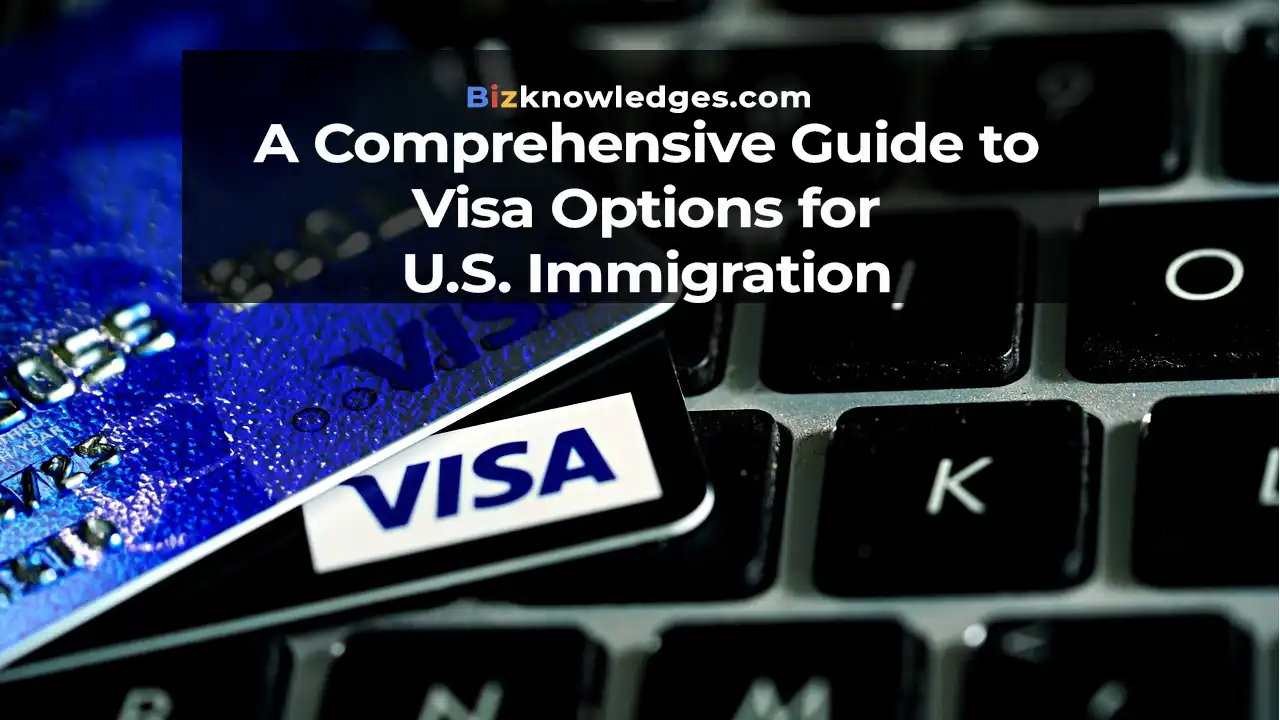A Comprehensive Guide to Visa Options for U.S. Immigration

Immigrating to the United States requires navigating a complex array of visa options, each tailored for specific purposes and eligibility. Understanding these options is essential for those looking to make the U.S. their new home. This guide offers an overview of the main visa categories, including immigrant and non-immigrant visas, and provides insights into selecting the right visa based on individual circumstances.
Immigrant Visas
Immigrant visas are for those intending to live permanently in the U.S. They are mainly divided into family-based and employment-based categories.
- Family-Based Visas: These visas allow U.S. citizens and lawful permanent residents to sponsor family members. Immediate relatives, such as spouses, parents, and unmarried children under 21, have priority and don’t face annual quotas. Other family members, like siblings and married children, fall under preference categories with limited annual visas.
- Employment-Based Visas: These are for individuals seeking permanent employment in the U.S. They are categorized into five preferences based on skill level and job type. For instance, EB-1 visas are for individuals with extraordinary abilities, while EB-2 and EB-3 visas cater to professionals and skilled workers. Each category has specific eligibility criteria, such as labor certification or employer sponsorship. Additionally, individuals may apply for advance parole, allowing them to travel while their visa application is pending.
- Diversity Visa Program: Commonly known as the Green Card Lottery, this program provides 50,000 visas annually to individuals from countries with low immigration rates to the U.S. Applicants are randomly selected and must meet basic education or work experience requirements.
Non-Immigrant Visas
Non-immigrant visas are for temporary stays in the U.S. They cater to various purposes, including tourism, study, and work.
- Tourist and Business Visas (B-1/B-2): These visas are for those visiting the U.S. for business, tourism, or medical treatment. Applicants must demonstrate they have no intention of staying permanently and prove sufficient ties to their home country.
- Student Visas (F-1, M-1): F-1 visas are for academic studies, while M-1 visas cover vocational training. Applicants must be accepted by a U.S. institution enrolled in the Student and Exchange Visitor Program (SEVP) and demonstrate financial ability to support themselves.
- Work Visas (H-1B, L-1, O-1): These visas are for temporary employment. The H-1B visa is for professionals in specialty occupations, requiring a bachelor’s degree or higher. L-1 visas are for intracompany transferees, and O-1 visas cater to individuals with extraordinary abilities.
Choosing the Right Visa
Selecting the appropriate visa depends on individual goals and circumstances. Factors to consider include the purpose of the visit, duration of stay, and eligibility criteria. For long-term or permanent intentions, immigrant visas are suitable, whereas non-immigrant visas are better for temporary purposes.
Application Process
The application process varies by visa type but generally includes submitting a petition or application form, providing supporting documents, and attending an interview at a U.S. consulate or embassy. It’s essential to thoroughly understand the requirements and prepare all necessary documentation to avoid delays or denials.
Benefits and Limitations
Each visa category comes with its advantages and limitations. Immigrant visas offer a path to permanent residency and eventual citizenship, while non-immigrant visas provide flexibility for temporary stays. However, immigrant visas often involve longer processing times and stricter eligibility criteria.
Seeking Professional Guidance
Navigating the visa process can be complex, and seeking professional guidance is advisable. Immigration attorneys and consultants can provide tailored advice, ensuring compliance with U.S. laws and increasing the chances of a successful application.
Resources for Further Information
Numerous resources are available for prospective immigrants, including the U.S. Citizenship and Immigration Services (USCIS) website, which offers detailed information on visa types and application procedures. Additionally, local legal aid organizations and cultural associations can provide support and guidance.
Conclusion
Understanding the diverse visa options for U.S. immigration is essential for a successful journey. By evaluating individual circumstances and consulting with professionals, applicants can make informed decisions and increase their chances of attaining their immigration goals while contributing positively to their new communities.
